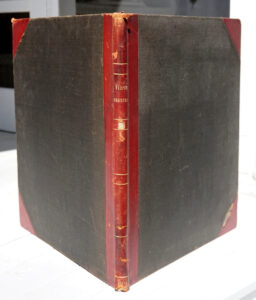May 2, 2023
Sane, insane, or idiotic? Temperate or intemperate? Epileptic or paralytic? Able to labor? Startling, but these were four of the boxes town hall workers were asked to fill out in the early 20th century as they made entries in the Medfield Pauper Register.

The volume at hand covered the years from 1917 to 1938, during which time all 1,127 alms recipients were listed as sane. No insane, no idiots, no one suffering from epilepsy or paralysis. State hospital patients would not have been included in the tally – only Medfield residents.
(Hmmm – a 100% sanity rating strains credibility; one wonders about the qualifications and motivations of those entering the data.)
Why was the pauper register kept? Before the New Deal and Social Security in the 1930s, the federal government didn’t provide any benefits. Paupers were pretty much on their own; towns provided some but not great relief. These days the Medfield Home Committee helps fill some needs.
Medfield town reports show that in 1918 and 1919 the town paid about $3,000 for support of the poor and $900 for [World War I] soldiers’ relief. For context, in 1918 the town spent $11,600 on education, $1,600 on the library, $1,800 each on police and fire, $2,600 on streetlights. The report did not add up the total town budget.
In the Depression year of 1934, there were 64 paupers in the register, and the town provided $13,000 in relief. The total town budget was $240,000, which also included $30,000 for education, $3,000 each for police and fire, and $2,000 for the library.
Beyond sane/insane/idiotic, etc., the other information gathered in the pauper register seems more to the point – name, age (ranging from 2 to 94), and other personal information, where they were supported and whence discharged.
Like most other historical societies, Medfield’s has its share of big, old, rather elegant-looking accounting books in its basement. The covers are black, with maroon leather trim, and those in Medfield measure 15×17.
With these books, often more than a century has passed since the last record was entered…and few if any eyes have been cast on them since. Yet they’re keepers – they contribute to our understanding of the way things used to be.
They were printed by the Hobbs and Warren Company of Boston, established in 1858. In that era, users would hand write numbers and other information in the books, and fortunately for us, in penmanship that was not only legible, but sometimes even beautiful. Hobbs and Warren may still be in business – their website is hobbs-warren.hub.biz, but their phone number not in service.